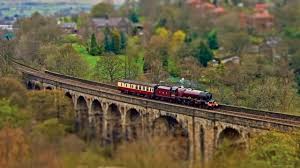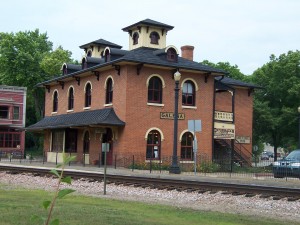This RecordClick genealogist appreciates the role that the railroads have played in settlement of our great nation. As a family history researcher, I treasure where trains took our ancestors both geographically and financially. Since everyone likes a fast trip back in time and the actual records of train routes may be out there for everyone to find, let’s look at a bit of railroad history.
As far as this genealogist can see, water was the fastest way to get around for our ancestors during the colonial days. The drawback was–location. The rivers were not necessarily the most direct route. The construction of canals provided better inland access but they were slow and still were limited in access for patrons.
Conceived in Europe, trains became an almost instant success upon their arrival in the United States in the 1820s. In one hour, a train could cover the distance that a horse took an entire day to go.
Here is a bit of a timeline:
- 1826 – The first steam locomotive was tested in the United States.
- 1827 – The Baltimore and Ohio Railroad was founded.
- 1830 – The South Carolina Canal and Railroad Co. was the first railroad to haul a revenue train with the goal of creating income.
- 1840 – The states east of the Mississippi have over 2,800 miles of track.
- 1850 – Over 9,000 miles of track had been laid east of the Mississippi. There were, however, some drawbacks. Track width was not standardized and there were many unsafe practices in the construction and operation of the railroads.
- 1861 – The Civil War demonstrated that railroads were a good way to move men and material.
- 1862 – Construction of the continental railroad began.
- 1869 – Construction of the continental railroad was completed. Like a spine running across the center of the United States from east to west, it encouraged more railroad building.
- 1880s – Track width became standardized.
- 1890s – The United States had over 163,000 miles of track.
- 1916 – The amount of railroad track topped out at 254,037 miles.
The construction and operation of railroads provided employment, travel opportunities and benefitted the shipment of goods. Genealogist, do note that these benefits all had the possibility of creating additional records for the family researcher.
In total, there were hundreds of large and small railroad companies at one time or another. There were companies such as the Baltimore & Ohio Railroad, the Pennsylvania Railroad and the Union Pacific that were major players in the industry. There were small firms as well – Dansville & Mount Morris, Genesee & Wyoming, Oregon Short Line, Eric Lackawanna and the Erie and Kalamazoo Railroad.
The first thing the genealogist should do is to find old maps and histories of the areas where the ancestors lived. Railroads helped numerous towns leave a mark on an area. Through the 1930s, maps frequently showed and named railroads and railroad right-of-ways. Local newspapers regularly carried railroad information – schedules, when trains were late and advertisements. Some newspapers would print names or pictures of people arriving or leaving the station.
The papers also carried stories of railroad accidents – and there were many.
Find out what railroads the families used. Then find out a little of the history of the railroad.
- Who owned it?
- Where were the headquarters?
- How big was the depot in the town?
- How long did it serve the town?
- What happened to the railroad?
- Was it purchased by another line or did it just cease operation?
The genealogical researcher should next think out of the genealogy box. Try a new info route!
There are a lot of railroad enthusiasts around posting pictures of abandoned railroad right-of-ways, bridges, railroad engines and cars. Don’t forget the numerous railroad historical societies and museums. There may even be information at the local museum. Use a search engine to see what might be found. Three online places (among the many) that might be helpful:
- Abandoned Railroads In addition to pictures, it has a good list of railroads and track that have been abandoned.
- Library of Congress, The Library of Congress has a large online map collection including a large number of railroad maps from the Civil War. Railroad information can be found in the historical newspaper collection.
- Internet Archives, A number of railroad histories are available online.
If you prefer to be on time with information and stick to a very efficient schedule, hire a professional genealogist from RecordClick. Our family history researchers will find new information for you and track your ancestors’ routes well.








